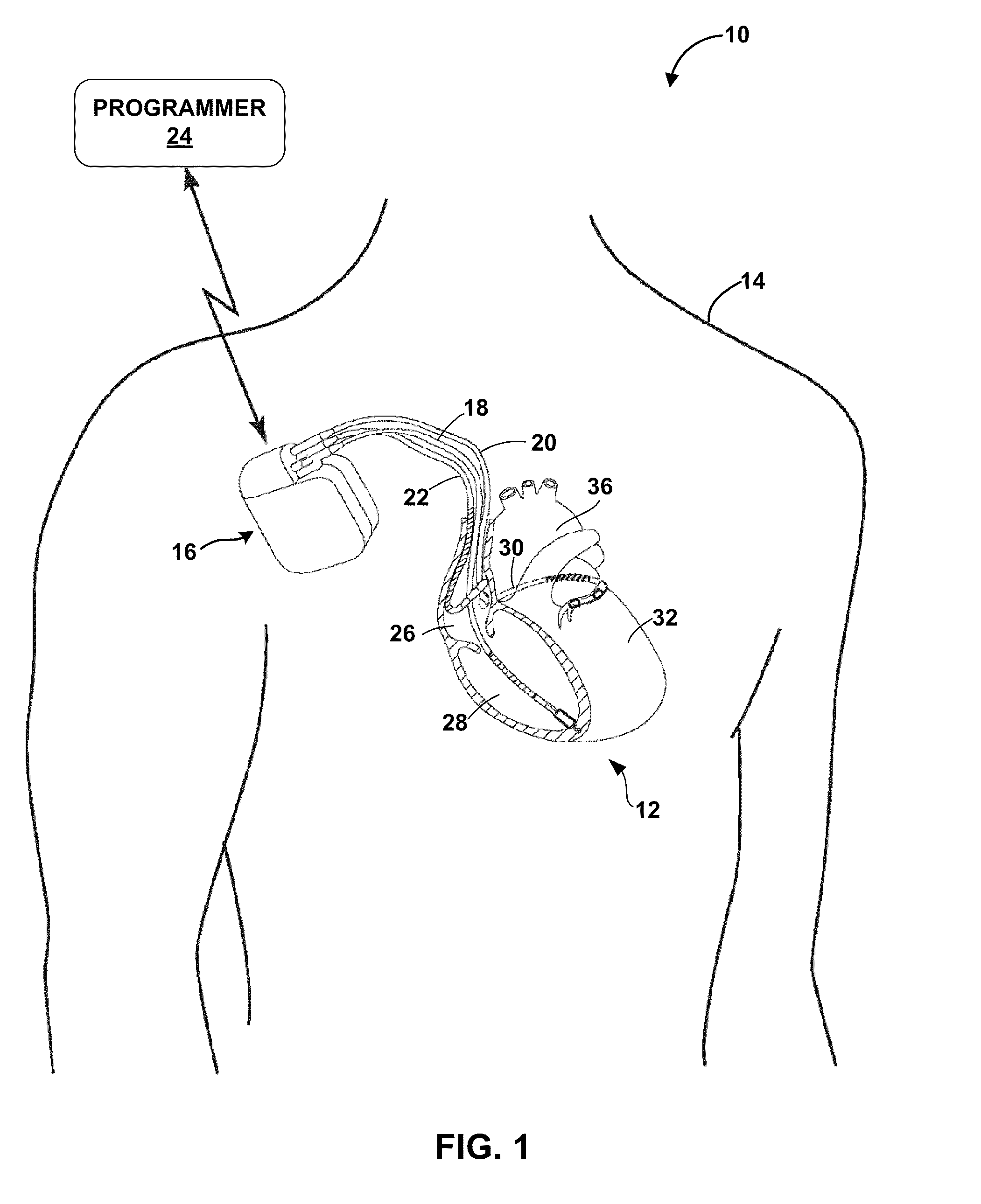Discrimination of ventricular tachycardia from supraventricular tachycardia
a technology of supraventricular tachycardia and ventricular tachycardia, which is applied in the field of discrimination of can solve the problems of undesired, ineffective delivery of therapy to the ventricles, and inability to effectively distinguish ventricular tachycardia from supraventricular tachycardia in all cases
- Summary
- Abstract
- Description
- Claims
- Application Information
AI Technical Summary
Benefits of technology
Problems solved by technology
Method used
Image
Examples
Embodiment Construction
[0024]In general, this disclosure describes various techniques for discriminating supraventricular tachycardia (SVT) from ventricular tachycardia (VT). These techniques may be performed in an implantable medical device (IMD), such as an implantable pacemaker, defibrillator, cardioverter, or any combination thereof. An IMD will be described herein for purposes of example. Although, in other examples, these discrimination techniques may be performed by an external device, e.g., an external programmer that communicates with an IMD.
[0025]In one example, a processor, e.g., of an IMD, detects a tachycardia rhythm based on sensed cardiac activity and classifies the tachycardia as a 1:1 tachycardia, i.e., exhibiting one atrial complex per one ventricular complex. The IMD may deliver a pacing pulse to an atrium of the patient timed to be substantially synchronous with a ventricular depolarization. For example, the IMD may predict the timing of the ventricular depolarization based on sensed c...
PUM
 Login to View More
Login to View More Abstract
Description
Claims
Application Information
 Login to View More
Login to View More - R&D
- Intellectual Property
- Life Sciences
- Materials
- Tech Scout
- Unparalleled Data Quality
- Higher Quality Content
- 60% Fewer Hallucinations
Browse by: Latest US Patents, China's latest patents, Technical Efficacy Thesaurus, Application Domain, Technology Topic, Popular Technical Reports.
© 2025 PatSnap. All rights reserved.Legal|Privacy policy|Modern Slavery Act Transparency Statement|Sitemap|About US| Contact US: help@patsnap.com



